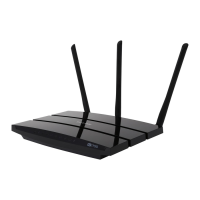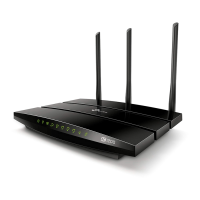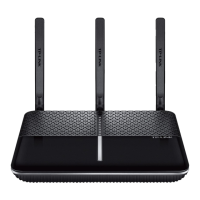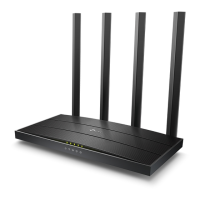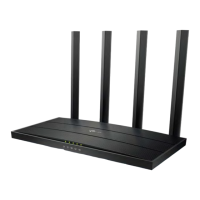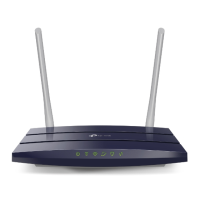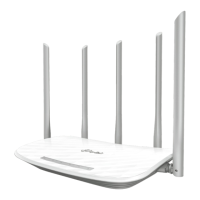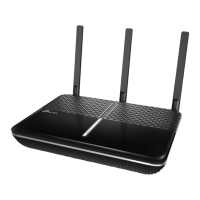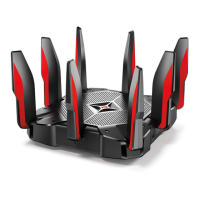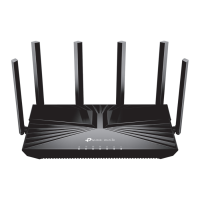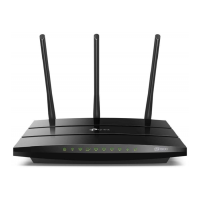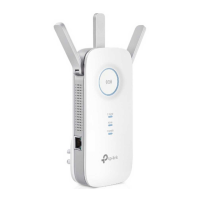
Do you have a question about the TP-Link AC1750 and is the answer not in the manual?
| Interface | WLAN |
|---|---|
| Connectivity technology | Wireless |
| Chipset | - |
| Internal | Yes |
| Certification | CE, FCC |
| Modulation | 16-QAM, 64-QAM, CCK, DBPSK, DQPSK, OFDM |
| Wi-Fi standards | 802.11a, Wi-Fi 5 (802.11ac), 802.11b, 802.11g, Wi-Fi 4 (802.11n) |
| Top Wi-Fi standard | Wi-Fi 5 (802.11ac) |
| Security algorithms | 128-bit WEP, 64-bit WEP, 802.1x RADIUS, WPA-PSK, WPA2-PSK |
| Networking standards | IEEE 802.11a, IEEE 802.11ac, IEEE 802.11b, IEEE 802.11g, IEEE 802.11n |
| Maximum data transfer rate | 1300 Mbit/s |
| WLAN data transfer rates supported | 11, 54, 450, 1300 Mbit/s |
| Windows operating systems supported | Windows 7 Enterprise, Windows 7 Enterprise x64, Windows 7 Home Basic, Windows 7 Home Basic x64, Windows 7 Home Premium, Windows 7 Home Premium x64, Windows 7 Professional, Windows 7 Professional x64, Windows 7 Starter, Windows 7 Starter x64, Windows 7 Ultimate, Windows 7 Ultimate x64, Windows 8, Windows 8.1, Windows XP Home, Windows XP Home x64, Windows XP Professional, Windows XP Professional x64 |
| Sustainability certificates | RoHS |
| Storage temperature (T-T) | -10 - 70 °C |
| Operating temperature (T-T) | 0 - 40 °C |
| Storage relative humidity (H-H) | 5 - 90 % |
| Operating relative humidity (H-H) | 10 - 90 % |
| Depth | 120.8 mm |
|---|---|
| Width | 115.2 mm |
| Height | 21.5 mm |
Provides an overview of the Archer C8 AC1750 Wireless Dual Band Gigabit Router's features.
Lists the key features and functionalities of the Archer C8 router.
Describes the physical layout and components of the router, including front and rear panels.
Lists necessary hardware, software, and optimal placement conditions for router setup.
Provides step-by-step instructions for physically connecting the router, modem, and PC.
Guides users through selecting and configuring WAN connection types (PPPoE, Static IP, etc.).
Covers basic configuration of wireless network names (SSID) and passwords.
Explains the network map and how to configure basic internet connection settings.
Configures basic wireless network parameters like SSID and password for 2.4GHz and 5GHz.
Manages USB settings, including file sharing and print server functionality.
Allows creation and configuration of a separate wireless network for guests.
Manages WAN, LAN, and MAC Clone settings for network connectivity.
Configures basic and advanced wireless settings, security, WPS, and MAC filtering for both bands.
Manages USB storage, file sharing, print server, and guest network configurations.
Manages port forwarding, virtual servers, DMZ, UPnP for network services.
Configures firewall, VPN passthrough, DoS protection, local/remote management, parental, and access controls.
Manages routing tables, bandwidth control, and IP/MAC binding rules.
Configures DDNS, IPv6, and uses system tools for diagnostics, upgrades, and backups.
Addresses common questions about configuring internet access for ADSL and Ethernet users.
Covers FAQs related to configuring applications like Netmeeting and WEB servers.
Guides on installing TCP/IP components in Windows XP for network setup.
Explains how to verify the network connection between PC and router using ping.
Lists general and wireless specifications of the router, including standards, ports, and bands.
Defines technical terms and acronyms used in the manual.
